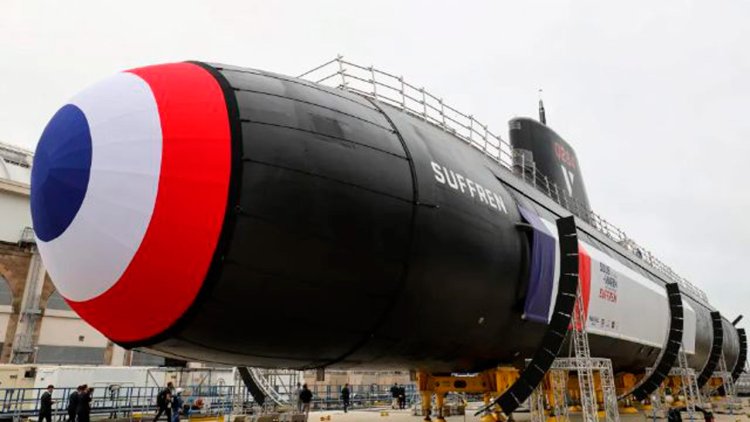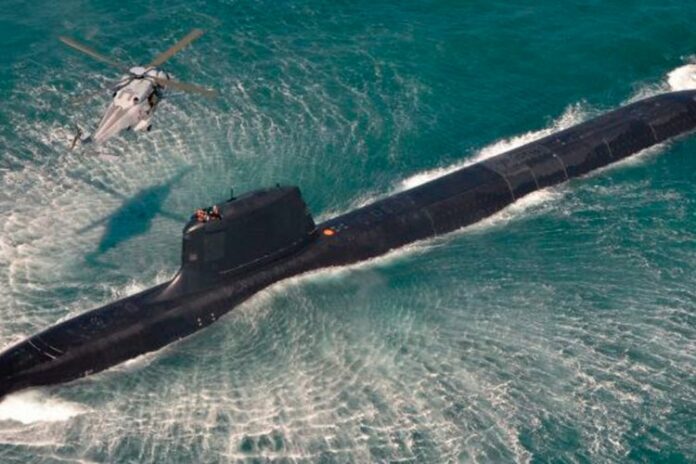Previously, Naval Group held only a preliminary contract with the Dutch government. However, this tie was strengthened as the Dutch House of Representatives endorsed the Naval Group’s proposal for the Dutch submarine replacement program.
In a debate held on June 11, a motion by the Reformed Political Party (Staatkundig Gereformeerde Partij: SGP) to defer the final decision on the acquisition to the next Dutch government was turned down.
Naval Group and Royal IHC
In March, the French Naval Group and its Dutch partner, Royal IHC, were chosen by the outgoing Dutch government to construct four Barracuda-class diesel-electric submarines. These new submarines will replace the Royal Navy’s three aging Walrus-class boats, as confirmed by the Naval Group and both the Dutch and French governments.
While the exact cost for the four submarines — named Orka, Zwaardvis (Swordfish), Barracuda, and Tijgerhaai (Tiger Shark) — hasn’t been disclosed, the Ministry of Defense informed Parliament that the “investment budget” for construction and related expenses until 2039 is 5.6 billion euros ($6.1 billion). These submarines will be built in Cherbourg, France.
According to Dutch State Secretary of Defense Christoph van der Maat, the first two submarines are expected to enter service between 2034 and 2037. Their inclusion of Tomahawk missiles will provide a “niche capability within NATO and the EU,” as he noted in mid-2023.
Despite gaining political backing, the initial ruling is still contested through a lawsuit from ThyssenKrupp Marine Systems (tkMS), a prominent German shipbuilder.
In March, the company took their case to the Dutch courts in The Hague. They confirmed to Reuters, stating, “This step is a standard business practice in large projects involving public tenders, especially given the unresolved questions concerning specific assessment criteria.”
Naval Group was vying for the project against the Dutch-Swedish consortium Damen-Saab and Germany’s ThyssenKrupp Marine Systems, all of whom responded to the Dutch government’s 2017 tender invitation. At that time, the estimated investment was 2.5 billion euros ($2.73 billion), as reported by Dutch daily De Telegraaf.
The Barracuda class
The Barracuda-class submarines, also known as the Suffren class, are a series of nuclear attack submarines developed by France. In terms of dimensions, the Barracuda-class submarines measure approximately 99.5 meters in length, with a beam of 8.8 meters. These dimensions allow for a streamlined and efficient design, optimizing both speed and stealth.
The displacement of the Barracuda-class submarines is around 5,300 tons when surfaced and appr. 5,300 tons when submerged. This significant displacement supports a variety of advanced systems and weaponry, enabling the submarines to perform a wide range of missions.
Propulsion for the Barracuda class is provided by a nuclear reactor, specifically the K15 pressurized water reactor. This reactor allows the submarines to operate at high speeds and remain submerged for extended periods without the need to surface for air, providing a strategic advantage in stealth and endurance.
A range of advanced systems
The crew complement for the Barracuda-class submarines is typically around 65 personnel. This includes officers, enlisted sailors, and specialists who operate the various systems and weapons onboard, ensuring the submarine can perform its missions effectively.
The Barracuda class is equipped with a range of advanced systems, including sonar arrays, electronic warfare systems, and communication equipment. These systems enhance the submarine’s ability to detect and track targets, as well as communicate securely with other naval assets.
In terms of weaponry, the Barracuda-class submarines are armed with torpedoes, anti-ship missiles, and land-attack cruise missiles. This diverse arsenal allows them to engage a variety of targets, from enemy submarines and surface ships to land-based installations.

350 meters underwater
The maximum depth of immersion for the Barracuda-class submarines is estimated to be around 350 meters. This depth capability allows them to operate effectively in deep ocean environments, evading detection and engaging targets from a position of relative safety.
The maximum stay underwater for the Barracuda-class submarines is primarily limited by crew endurance and food supplies, thanks to their nuclear propulsion. They can remain submerged for several months if necessary, providing a persistent and stealthy presence in contested waters.
Source: Bulgarian Military



